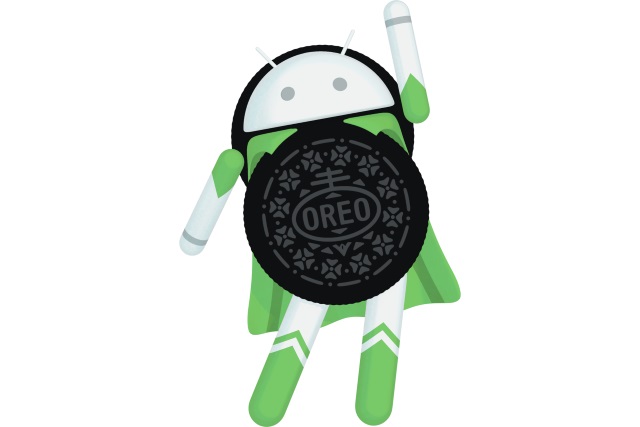Here's what's new in Android 8.0 Oreo
Recently Google at long last uncovered Android 8.0, otherwise called Oreo. Beside the name, discharge date and the subject of whether singular handsets will be dealt with to a redesign, the question on most Android clients' lips is "what's new?".
Google says that one of the essential points with Oreo was to make "liquid encounters," and enhancing velocity and productivity. The organization says that it is "more brilliant, speedier, more intense and sweeter than any other time in recent memory" - yet what does this really mean as far as new components?
The rollout of new forms of Android is famously moderate, yet Pixel, Nexus 5X, Nexus 6P, Pixel C and Nexus Player clients shouldn't need to hold up too long to get hold of the new form. Google additionally says that Essential, General Mobile, HMD Global Home of Nokia Phones, Huawei, HTC, Kyocera, LG, Motorola, Samsung, Sharp and Sony are booked to push out Oreo, and you can add OnePlus to that rundown also.
Google has shared the accompanying rundown of new elements that anticipate the individuals who are sufficiently fortunate to be dealt with to the overhaul:
Picture-in-picture gives clients a chance to oversee two undertakings all the while on any size screen, and it's simple for applications to help it. (Appeared at right)
Warning specks broaden the compass of notices and offer another approach to surface action in your applications. Specks work with zero exertion for most applications - we even concentrate the shade of the dab from your symbol.
Autofill structure streamlines how clients set up another gadget and synchronize their passwords. Applications utilizing structure information can advance their applications for Autofill, and secret key administrator applications can utilize the new APIs to make their administrations accessible to clients in their most loved applications. Autofill will take off completely finished the following couple of weeks as a component of a refresh to Google Play Services.
Framework advancements: We worked over the framework to help applications run speedier and smoother - for instance, in the runtime we included another simultaneous compacting trash gathering, code territory, and the sky is the limit from there.
Foundation limits: We included new cutoff points foundation area and wi-fi outputs and changes in the way applications keep running out of sight. These limits forestall unexpected abuse of battery and memory and apply to all applications - ensure you comprehend and represent these in your applications.
Correlative Android Vitals dashboards and IDE profilers: In the Play Console you would now be able to see total information about your application to enable you to pinpoint normal issues - unreasonable crash rate, ANR rate, solidified edges, moderate rendering, exorbitant wakeups, and that's just the beginning. You'll additionally discover new execution profilers in Android Studio 3.0, and new instrumentation in the stage.
Autosizing textview: Use autosizing TextView to naturally fill a TextView with content, paying little mind to the sum. You can make a variety of preset content sizes, or set min and max sizes with a stage granularity, and the content will develop and psychologist to fill the accessible TextView space.
Textual styles in XML: Fonts are currently a completely bolstered asset sort. You would now be able to utilize textual styles in XML formats and characterize textual style families in XML.
Downloadable text styles and emoticon: With downloadable textual styles you can stack text styles from a common supplier as opposed to incorporating them in your APK. The supplier and bolster library deal with the download of textual styles and offers them crosswise over applications. A similar execution likewise underpins downloadable emoticon, so you can get refreshed emoticon without being constrained to the emoticon incorporated with the gadget.
Versatile symbols: You would now be able to make versatile symbols that the framework shows in various shapes, in light of a veil chose by a gadget producer. The framework likewise vivifies associations with the symbols, and utilizations them in the launcher, alternate routes, settings, sharing exchanges, and in the review screen.
Easy route sticking: App alternate ways and homescreen gadgets are extraordinary for connecting with clients and now you can give clients a chance to include and stick alternate routes and gadgets to the launcher from inside your application. There's likewise another choice to add a particular movement to enable clients to make easy routes. The movement is finished with custom alternatives and affirmation.
Wide-array shading for applications: Imaging applications would now be able to take full preferred standpoint of new gadgets that have a wide-range shading skilled show. To show wide extent pictures, applications empower a banner in their show documents (per movement) and load bitmaps with an implanted wide shading profile (AdobeRGB, Pro Photo RGB, DCI-P3, and so forth.).
WebView upgrades: In Android Oreo, we've empowered WebView multiprocess mode naturally and added an API to let your application handle blunders and crashes. You can likewise select in your application's WebView articles to check URLs through Google Safe Browsing.
Java 8 Language APIs and runtime enhancements: Android now bolsters a few new Java Language APIs, including the new java.time API. Furthermore, the Android Runtime is speedier than any time in recent memory, with enhancements of up to 2x on some application benchmarks.

thanks